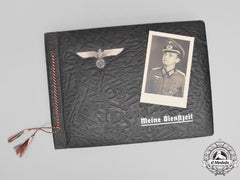
LOADING ...
In response to evolving domestic opinion, eMedals Inc has made the conscious decision to remove the presentation of German Third Reich historical artifacts from our online catalogue. For three decades, eMedals Inc has made an effort to preserve history in all its forms. As historians and researchers, we have managed sensitive articles and materials with the greatest of care and respect for their past and present social context. We acknowledge the growing sentiments put forth by the Canadian public and have taken proactive actions to address this opinion.
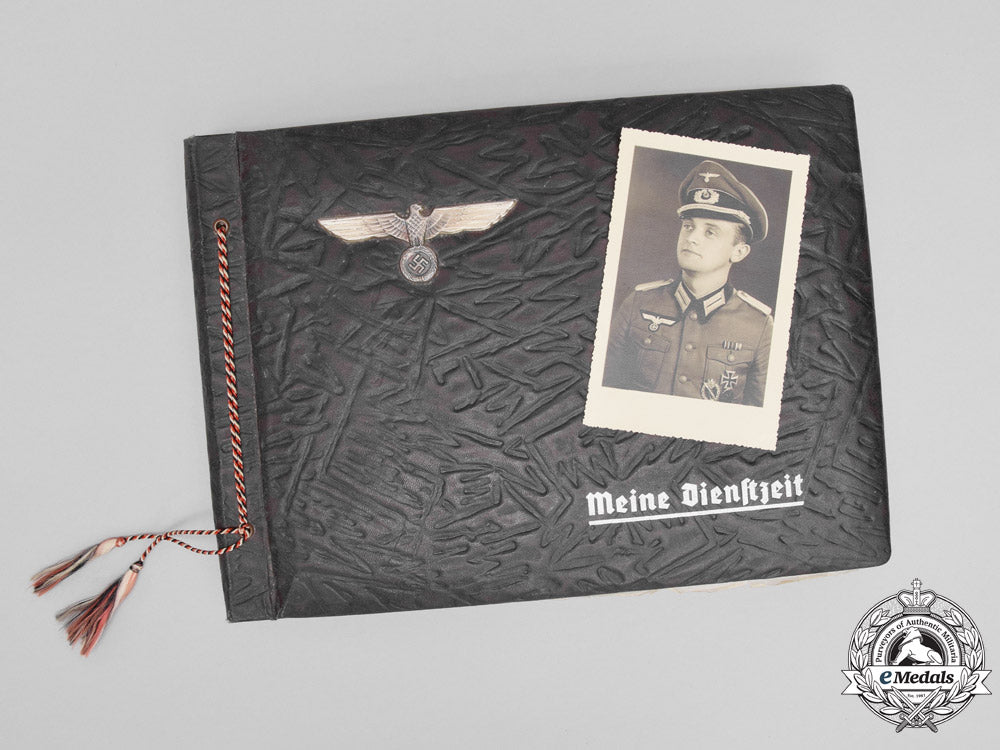
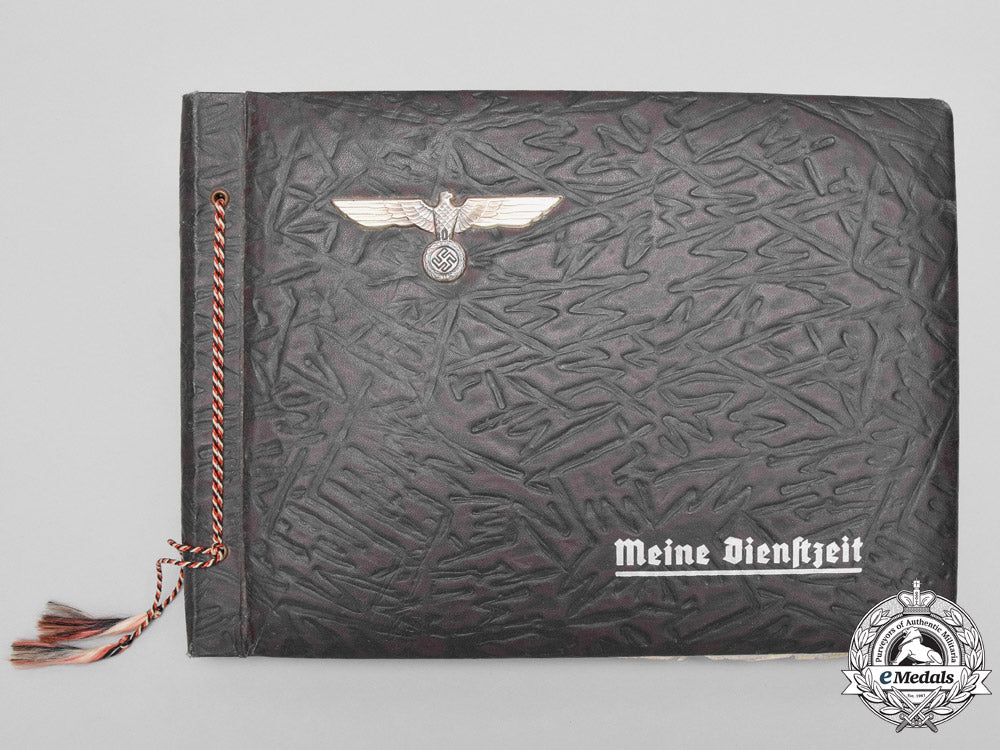
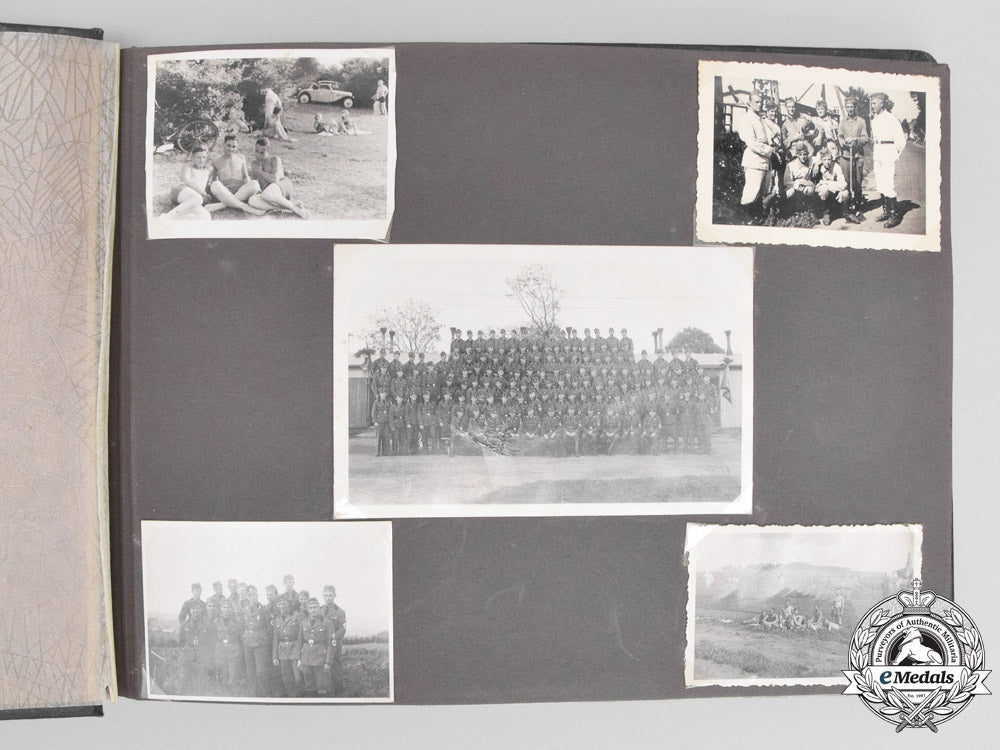
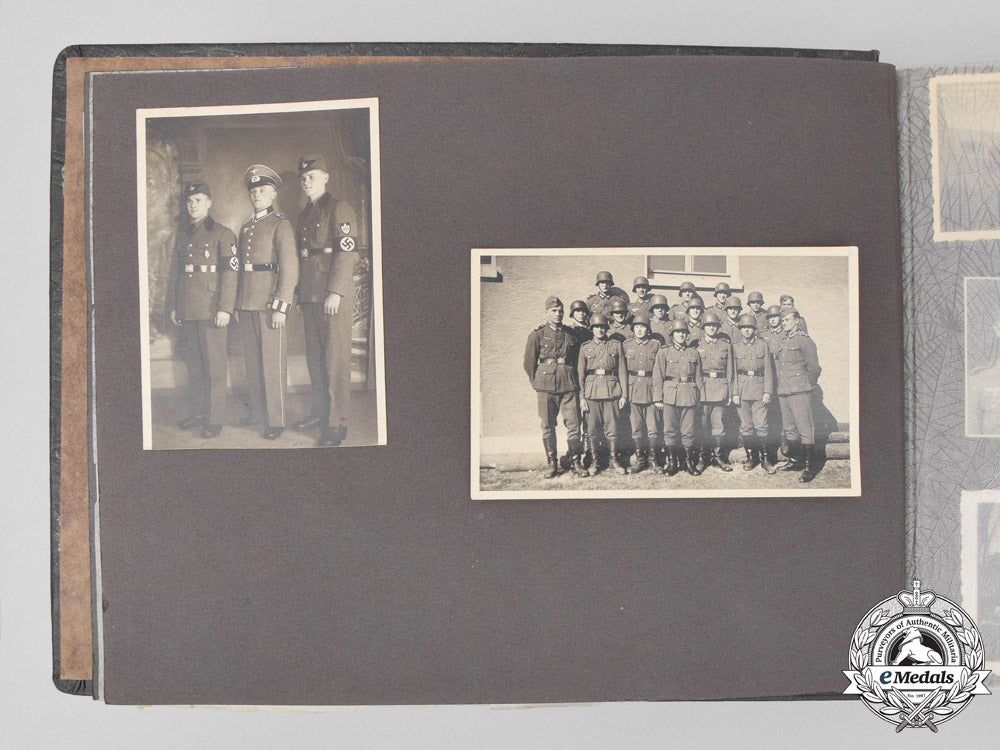
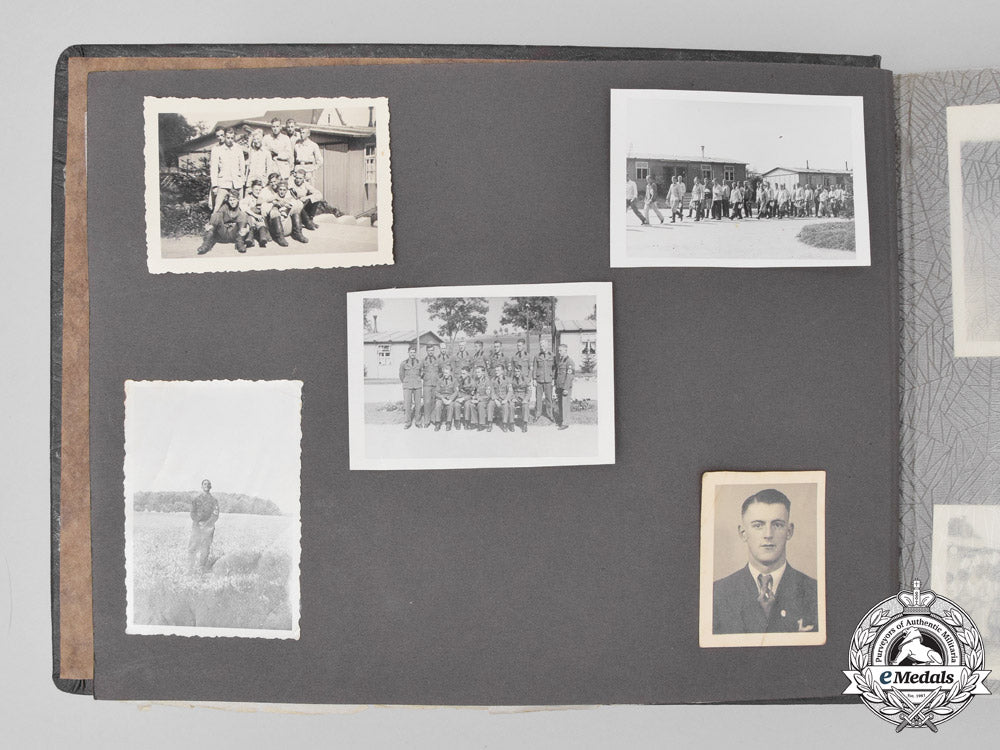
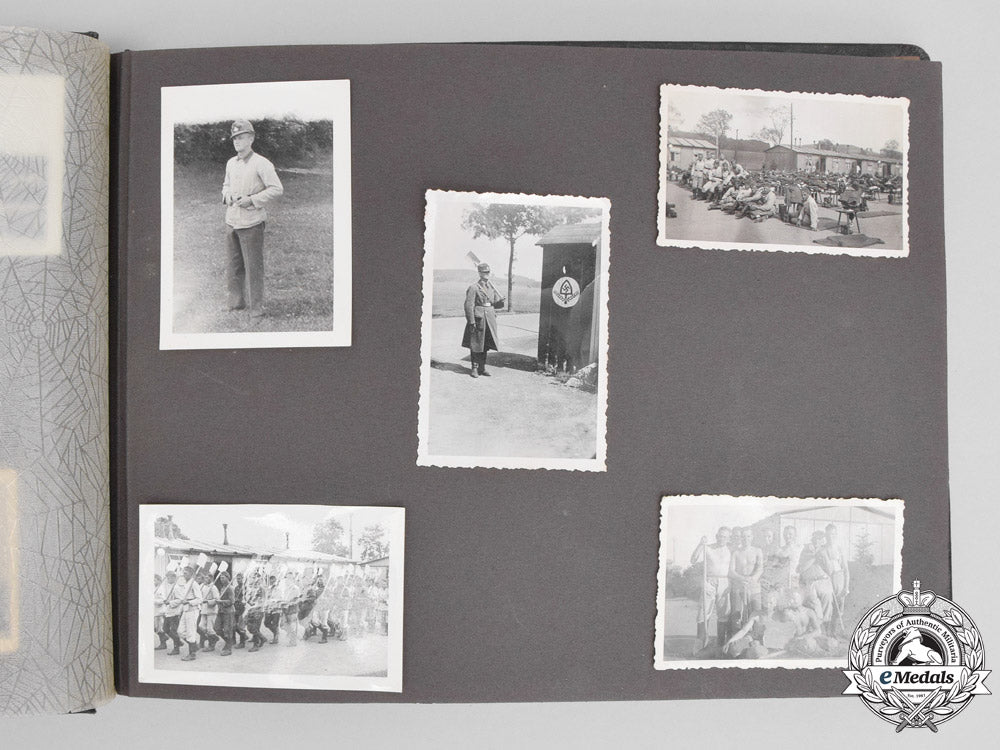
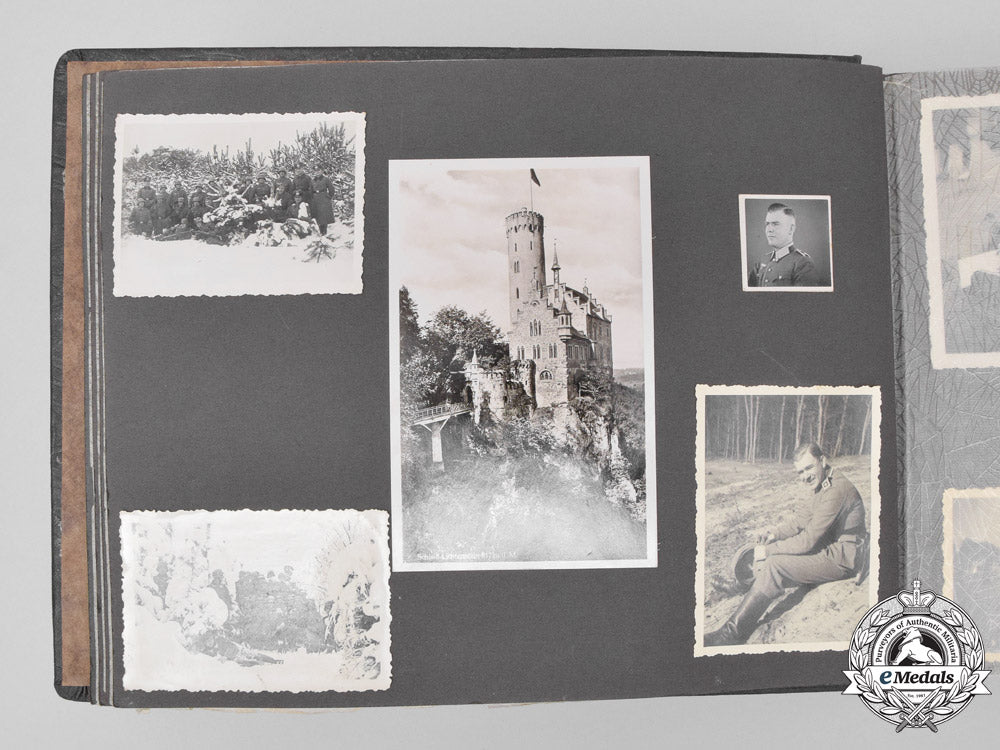
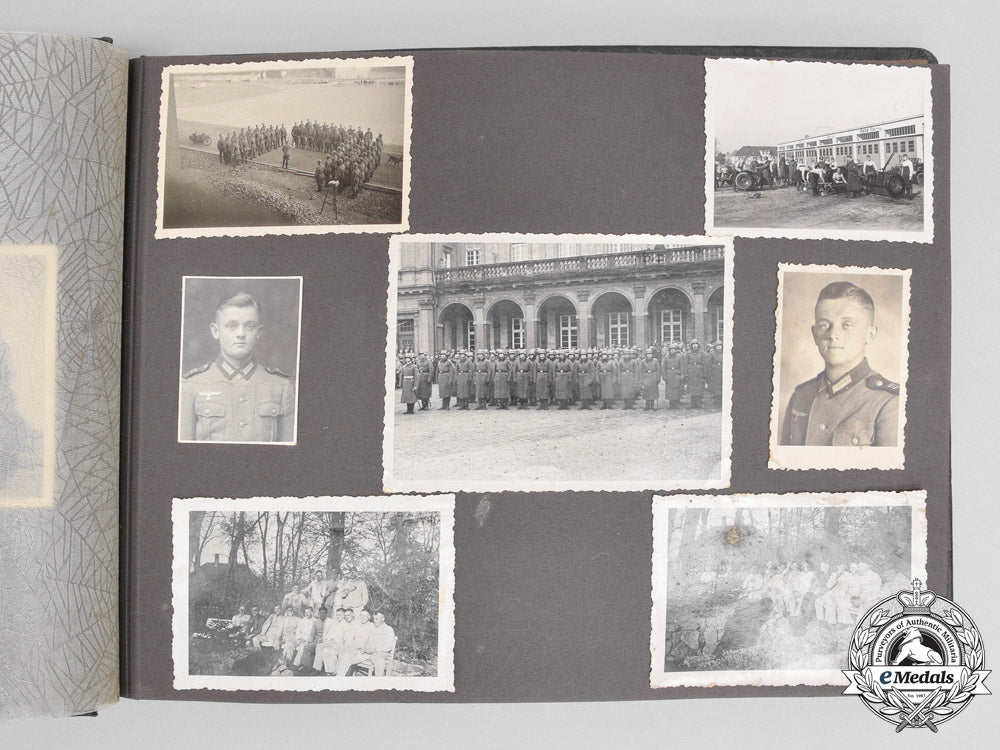
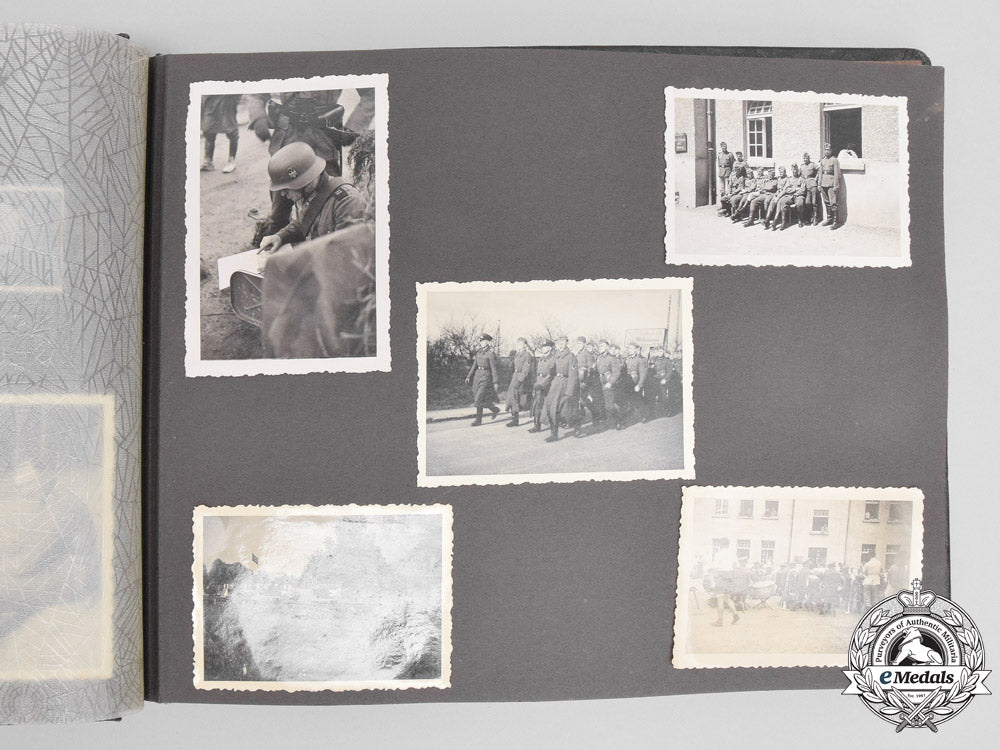
The Wartime Photo Album & Documents To Dkig & Gold Ccc Recipient Oberleutnant Kayser
The Wartime Photo Album & Documents To Dkig & Gold Ccc Recipient Oberleutnant Kayser
SKU: ITEM: G33850
Current Bid:
Your Max Bid:
Bid History:
Time Remaining:
Couldn't load pickup availability
Shipping Details
Shipping Details
eMedals offers rapid domestic and international shipping. Orders received prior to 12:00pm (EST) will be shipped on the same business day.* Orders placed on Canadian Federal holidays will be dispatched the subsequent business day. Courier tracking numbers are provided for all shipments. All items purchased from eMedals can be returned for a full monetary refund or merchandise credit, providing the criteria presented in our Terms & Conditions are met. *Please note that the addition of a COA may impact dispatch time.
Shipping Details
eMedals offers rapid domestic and international shipping. Orders received prior to 12:00pm (EST) will be shipped on the same business day.* Orders placed on Canadian Federal holidays will be dispatched the subsequent business day. Courier tracking numbers are provided for all shipments. All items purchased from eMedals can be returned for a full monetary refund or merchandise credit, providing the criteria presented in our Terms & Conditions are met. *Please note that the addition of a COA may impact dispatch time.
Description
Description
The collection consists of a special order German Cross in Gold award certificate (209x298mm, better than very fine); three promotion documents to Oberleutnant (Senior Lieutenant) (217x149/297mm, very fine/extremely fine); the photo album (315x233mm, near mint); a Lazarett wounded note (64x152mm, extremely fine); an answer letter to Kayser’s request to voluntarily join the army (210x149mm, fine); marching orders (149x105mm, very fine); a gas protection seminar certificate (146x106mm, near extremely fine); a certificate for procuring construction material (211x149mm, near extremely fine); a delousing certificate (106x149mm, extremely fine); and a letter from a subordinate (204x291mm, near mint) in original envelope (162x115mm, extremely fine).
The German Cross in Gold certificate is a Regiments-Sonderbefehl (regimental special order) for Grenadier Regiment 390, dated to September 7, 1944. It states that Oberleutnant Walter Kayser, Company Chief of 6th Company of Grenadier Regiment 390, has been awarded the German Cross in Gold on September 2, 1944, “for repeated acts of bravery on the battlefields between Leningrad and Pskov, at Daugavpils (Latvia) and Biržai (Lithuania)”. The certificate carries a facsimile of Oberstleutnant (Lieutenant Colonel) and Regiment Commander Wilhelm Harms (1895–1966), a recipient of the Knight’s Cross.
Three documents concerning Kayser’s promotion to Oberleutnant (Senior Lieutenant) of the Reserve, all dated to May 3, 1944. One is an excerpt of the regiment’s daily orders, stating the promotion, backdating to March 1, 1944. Kayser is listed as part of the 14th Company. Another is an accompanying letter, again stating the promotion. It is sent to a Lazarett (military hospital) in Tauroggen (Tauragė, Lithuania) to be given to Kayser, currently a patient there. The letter also states that after recovering Kayser is granted three weeks of vacation. The last one is a personal letter of congratulations by Major and Regiment Commander Wilhelm Harms. He gives his best wishes concerning the promotion and the recovery, and hopes that Kayser will be back with the regiment soon. Another person has added some handwritten lines, informing Kayser of a few other promotions and congratulating him as well. The signature is indecipherable. The last two certificates are signed in blue ink by Harms.
The photo album has a leather cover. In the upper left corner is a silvered metal (magnetic) national eagle emblem in the style of the Heer. The bottom reads: Meine Dienstzeit (my term of service). It consists of 48 pages, bellum-protected, which contain 220 pictures, with an additional three loose ones at the beginning. One of these is a studio portrait of Kayser in the rank of Lieutenant, wearing an Iron Cross 1st Class, a Silver Grade Infantry Assault Badge, and a Wound Badge in Black. His ribbon bar shows the Iron Cross 2nd Class, the Eastern Front Medal, and what is possibly a Westwall Medal. Another one of the loose pictures is dated to Poland in 1915, possibly showing an older relative of Kayser’s. The pictures of pages 1 to 3 show Kayser during his time with the RAD (Reich Labour Service) in Group 250/Detachment 3. On page 4 Kayser can be seen in an army dress uniform in the rank of EM. On the other picture he is the man on the right in NCO rank. The back reads: In memory of your “Kayserjäger” (Kayser’s tank hunters), 1st Korporalschaft (Corporal’s Command) of Infantry Panzer Jäger (Anti-Tank) Replacement Company 215. Several pages show soldiers of Infantry Regiment 111, stationed in Baden-Baden (southwest Germany). On page 9 are pictures of the 6th Company, on page 14 of the 14th Anti-Tank Company. Page 31 shows the first picture of Kayser in the rank of Feldwebel, and on page 48 is a picture of him in Senior Lieutenant rank. On the same page there is also a photo in which he wears a Close Combat Clasp.
A Lazarett wound note for Oberleutnant Kayser of the 6th Company of Infantry Regiment 390. It is dated to August 13, 1944 and intended to serve as ID on the way to the hospital. Kayser has problems with his right eye, possibly an inflammation of the cornea.
An answer letter, stating that Kayser’s request to voluntarily join the Infantry Regiment 111 is being processed by the 14th Anti-Tank Company, and that he will be informed of their decision. The letter is dated to February 5, 1937.
A marching order for Oberleutnant Kayser, stating that he is back on his way to his unit after recovering from his wounds. The document is dated to June 13, 1944.
A gas protection seminar ID, stating that Lieutenant Kayser is training at the army gas protection school in Nomme near Reval (Estonia) between November 18 and 28, 1942. The document is dated to November 18, 1942 and signed by an Oberstleutnant (Lieutenant Colonel) and Commander of the school, Grauer.
A certificate stating that Kayser of the Staff of Grenadier Regiment 390 is authorised to procure construction material in Pskov, which are needed in taking up position of the regiment. It is dated to March 10, 1944. Once more the document is signed by Regiment Commander Harms.
A delousing certificate dated to May 20, 1944, upon Kayser’s release from the Lazarett. It states that Kayser does not have contagious diseases and is free of vermin, and therefore eligible to use public transportation.
A Feldpost letter to Lieutenant Kayser. It was originally sent to Infantry Regiment 390 (Feldpost number 20568), but had to be rerouted to the Lazarett in Tauroggen (Feldpost number 42532). It was sent from Dresden on April 11, 1944. The sender is an NCO, one of Kayser’s subordinates who at the time is participating in a seminar at the Fahnenjunker School of the Infantry. He writes mostly about his experience at the school and in Dresden, both are mostly positive.
Footnote: Little is known about the life of Walter Kayser. He was born on January 8, 1918 in Beuerbach (today a district of the town of Hünstetten, Hesse, north of Frankfurt). After the mandatory service in the RAD Kayser voluntarily joined the Heer in 1937 at the age of 19. He served in the 6th and 14th (Anti-Tank) Company of Infantry Regiment 111. After the beginning of the war the regiment initially fought at the Western Front. It is possible that this is where Kayser first saw action. At some point he was transferred to Grenadier Regiment 390, stationed at the northern part of the Eastern Front. Kayser was awarded the Iron Cross 2nd Class on April 2nd, 1942, possibly during the battles at the Volkhov river. The Iron Cross 1st Class followed on March 13, 1943, possibly in the vicinity of Leningrad. Kayser was wounded (presumably) in April of 1944 while commanding the 6th Company of Grenadier Regiment 390. During the time of his recovery, he was promoted to Oberleutnant (Senior Lieutenant). Kayser eventually made it back to his unit. He was awarded the German Cross in Gold on September 2nd, 1944, “for repeated acts of bravery on the battlefields between Leningrad and Pskov, at Daugavpils (Latvia) and Biržai (Lithuania)”. His final known decoration was the Close Combat Clasp in Gold, which he was awarded on April 12, 1945 in the rank of Hauptmann (Captain), presumably fighting defensive battles in modern day Poland.
Description
The collection consists of a special order German Cross in Gold award certificate (209x298mm, better than very fine); three promotion documents to Oberleutnant (Senior Lieutenant) (217x149/297mm, very fine/extremely fine); the photo album (315x233mm, near mint); a Lazarett wounded note (64x152mm, extremely fine); an answer letter to Kayser’s request to voluntarily join the army (210x149mm, fine); marching orders (149x105mm, very fine); a gas protection seminar certificate (146x106mm, near extremely fine); a certificate for procuring construction material (211x149mm, near extremely fine); a delousing certificate (106x149mm, extremely fine); and a letter from a subordinate (204x291mm, near mint) in original envelope (162x115mm, extremely fine).
The German Cross in Gold certificate is a Regiments-Sonderbefehl (regimental special order) for Grenadier Regiment 390, dated to September 7, 1944. It states that Oberleutnant Walter Kayser, Company Chief of 6th Company of Grenadier Regiment 390, has been awarded the German Cross in Gold on September 2, 1944, “for repeated acts of bravery on the battlefields between Leningrad and Pskov, at Daugavpils (Latvia) and Biržai (Lithuania)”. The certificate carries a facsimile of Oberstleutnant (Lieutenant Colonel) and Regiment Commander Wilhelm Harms (1895–1966), a recipient of the Knight’s Cross.
Three documents concerning Kayser’s promotion to Oberleutnant (Senior Lieutenant) of the Reserve, all dated to May 3, 1944. One is an excerpt of the regiment’s daily orders, stating the promotion, backdating to March 1, 1944. Kayser is listed as part of the 14th Company. Another is an accompanying letter, again stating the promotion. It is sent to a Lazarett (military hospital) in Tauroggen (Tauragė, Lithuania) to be given to Kayser, currently a patient there. The letter also states that after recovering Kayser is granted three weeks of vacation. The last one is a personal letter of congratulations by Major and Regiment Commander Wilhelm Harms. He gives his best wishes concerning the promotion and the recovery, and hopes that Kayser will be back with the regiment soon. Another person has added some handwritten lines, informing Kayser of a few other promotions and congratulating him as well. The signature is indecipherable. The last two certificates are signed in blue ink by Harms.
The photo album has a leather cover. In the upper left corner is a silvered metal (magnetic) national eagle emblem in the style of the Heer. The bottom reads: Meine Dienstzeit (my term of service). It consists of 48 pages, bellum-protected, which contain 220 pictures, with an additional three loose ones at the beginning. One of these is a studio portrait of Kayser in the rank of Lieutenant, wearing an Iron Cross 1st Class, a Silver Grade Infantry Assault Badge, and a Wound Badge in Black. His ribbon bar shows the Iron Cross 2nd Class, the Eastern Front Medal, and what is possibly a Westwall Medal. Another one of the loose pictures is dated to Poland in 1915, possibly showing an older relative of Kayser’s. The pictures of pages 1 to 3 show Kayser during his time with the RAD (Reich Labour Service) in Group 250/Detachment 3. On page 4 Kayser can be seen in an army dress uniform in the rank of EM. On the other picture he is the man on the right in NCO rank. The back reads: In memory of your “Kayserjäger” (Kayser’s tank hunters), 1st Korporalschaft (Corporal’s Command) of Infantry Panzer Jäger (Anti-Tank) Replacement Company 215. Several pages show soldiers of Infantry Regiment 111, stationed in Baden-Baden (southwest Germany). On page 9 are pictures of the 6th Company, on page 14 of the 14th Anti-Tank Company. Page 31 shows the first picture of Kayser in the rank of Feldwebel, and on page 48 is a picture of him in Senior Lieutenant rank. On the same page there is also a photo in which he wears a Close Combat Clasp.
A Lazarett wound note for Oberleutnant Kayser of the 6th Company of Infantry Regiment 390. It is dated to August 13, 1944 and intended to serve as ID on the way to the hospital. Kayser has problems with his right eye, possibly an inflammation of the cornea.
An answer letter, stating that Kayser’s request to voluntarily join the Infantry Regiment 111 is being processed by the 14th Anti-Tank Company, and that he will be informed of their decision. The letter is dated to February 5, 1937.
A marching order for Oberleutnant Kayser, stating that he is back on his way to his unit after recovering from his wounds. The document is dated to June 13, 1944.
A gas protection seminar ID, stating that Lieutenant Kayser is training at the army gas protection school in Nomme near Reval (Estonia) between November 18 and 28, 1942. The document is dated to November 18, 1942 and signed by an Oberstleutnant (Lieutenant Colonel) and Commander of the school, Grauer.
A certificate stating that Kayser of the Staff of Grenadier Regiment 390 is authorised to procure construction material in Pskov, which are needed in taking up position of the regiment. It is dated to March 10, 1944. Once more the document is signed by Regiment Commander Harms.
A delousing certificate dated to May 20, 1944, upon Kayser’s release from the Lazarett. It states that Kayser does not have contagious diseases and is free of vermin, and therefore eligible to use public transportation.
A Feldpost letter to Lieutenant Kayser. It was originally sent to Infantry Regiment 390 (Feldpost number 20568), but had to be rerouted to the Lazarett in Tauroggen (Feldpost number 42532). It was sent from Dresden on April 11, 1944. The sender is an NCO, one of Kayser’s subordinates who at the time is participating in a seminar at the Fahnenjunker School of the Infantry. He writes mostly about his experience at the school and in Dresden, both are mostly positive.
Footnote: Little is known about the life of Walter Kayser. He was born on January 8, 1918 in Beuerbach (today a district of the town of Hünstetten, Hesse, north of Frankfurt). After the mandatory service in the RAD Kayser voluntarily joined the Heer in 1937 at the age of 19. He served in the 6th and 14th (Anti-Tank) Company of Infantry Regiment 111. After the beginning of the war the regiment initially fought at the Western Front. It is possible that this is where Kayser first saw action. At some point he was transferred to Grenadier Regiment 390, stationed at the northern part of the Eastern Front. Kayser was awarded the Iron Cross 2nd Class on April 2nd, 1942, possibly during the battles at the Volkhov river. The Iron Cross 1st Class followed on March 13, 1943, possibly in the vicinity of Leningrad. Kayser was wounded (presumably) in April of 1944 while commanding the 6th Company of Grenadier Regiment 390. During the time of his recovery, he was promoted to Oberleutnant (Senior Lieutenant). Kayser eventually made it back to his unit. He was awarded the German Cross in Gold on September 2nd, 1944, “for repeated acts of bravery on the battlefields between Leningrad and Pskov, at Daugavpils (Latvia) and Biržai (Lithuania)”. His final known decoration was the Close Combat Clasp in Gold, which he was awarded on April 12, 1945 in the rank of Hauptmann (Captain), presumably fighting defensive battles in modern day Poland.









You May Also Like
Germany, HJ. A 1938 National Trade Competition Victor’s Badge, Gold Grade in Case, By Gustav Brehmer
G60096
Italy, Republic. An Order of Merit of the Italian Republic, Grand Cross Set by Johnson, 1970
EU23677
Spain, Franco Period. An Order of Civil Merit, Grand Cross Set
EU23731
Russia, Imperial. An Order of St. Anne, II Class in Gold
EU23720
Austria, Imperial. An Order of the Iron Crown, III Class in Gold, by Rothe, c.1900
EU23723
-
Germany, HJ. A 1938 National Trade Competition Victor’s Badge, Gold Grade in Case, By Gustav Brehmer
G60096
Add to CartRegular price $3,950 USDRegular price $0 USD Sale price $3,950 USDUnit price / per -
Italy, Republic. An Order of Merit of the Italian Republic, Grand Cross Set by Johnson, 1970
EU23677
Add to CartRegular price $950 USDRegular price $0 USD Sale price $950 USDUnit price / per -
Spain, Franco Period. An Order of Civil Merit, Grand Cross Set
EU23731
Add to CartRegular price $600 USDRegular price $0 USD Sale price $600 USDUnit price / per -
Russia, Imperial. An Order of St. Anne, II Class in Gold
EU23720
Add to CartRegular price $2,950 USDRegular price $0 USD Sale price $2,950 USDUnit price / per -
Austria, Imperial. An Order of the Iron Crown, III Class in Gold, by Rothe, c.1900
EU23723
Add to CartRegular price $3,950 USDRegular price $0 USD Sale price $3,950 USDUnit price / per
Do you have a similar item you are interested in selling?
Please complete the form and our client care representatives will contact you.
Sell Item






















